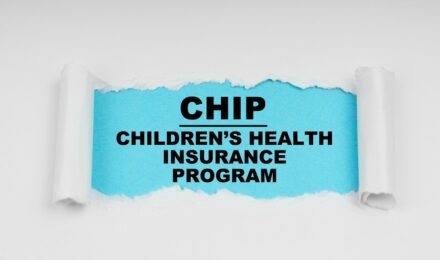Contents
The Emergency Rental Assistance program was a glimmer of hope during one of the most challenging times in recent history. When COVID-19 swept across the United States, millions of people faced unemployment and the chilling prospect of eviction. It was an overwhelming crisis, but the government’s intervention offered a safety net that continues to support struggling households. Could this program be the solution you’ve been searching for?
Government Housing Aid: Two Programs, One Mission
Did you know that the Emergency Rental Assistance initiative actually comprises two distinct programs? Together, ERA1 and ERA2 have distributed billions of dollars to those in need. Let’s break it down:
ERA1: The Consolidated Appropriations Act
ERA1, rolled out in 2021, delivered significant financial aid to vulnerable households. Much of this funding was allocated to community development institutions that assist minority populations disproportionately impacted by the pandemic.
But how much funding are we talking about? That depends on the source. The U.S. Treasury reports $25 billion was allocated, while the National Credit Union Administration cites $12 billion. Though the numbers may seem inconsistent, the intent and impact of this initiative remain indisputable.
ERA2: The American Rescue Plan Act
Also introduced in 2021, ERA2 focused on preventing evictions, addressing rental arrears, and covering essential utility costs. The figures associated with this program are equally staggering—the U.S. Treasury estimates $21.1 billion in funding, while the National Association of Counties references a jaw-dropping $1.9 trillion. The truth lies somewhere in between, but one thing is clear: this program has been a lifeline for many.
How to Make the Most of ERA2
Although ERA2 was established in 2021, its benefits are still accessible. Here’s the catch: the federal government provides the funding, but states determine how it’s distributed. This creates a patchwork of approaches—some straightforward, others frustratingly complex. Ready to navigate this maze?
Steps to Access Rental Assistance
- Check Availability: First, confirm whether your state still offers rental assistance. Program names can vary—for instance, Georgia’s initiative is called the Georgia Rental Assistance Program. If rental aid isn’t available, explore options like utility assistance.
- Confirm Eligibility: Income thresholds and other criteria differ by state. It’s crucial to review the specific requirements to avoid unnecessary roadblocks.
- Submit an Application: Depending on your state, applications might be online, mailed in, or even handled in person. Keep in mind that some states automatically distribute funds, so you may already qualify without even realizing it.
Updates to your eligibility can happen. Why miss out on potential support when revisiting your options could unlock new opportunities?
Program Updates and Effectiveness
The Emergency Rental Assistance program continues to evolve. On February 8, 2024, for example, new updates streamlined income verification processes and expanded access, as reported by the Treasury and Office of Evaluation Sciences. But how effective has it been overall?
Success Stories and Challenges
- Housing Projects: By mid-2023, $63 billion had been allocated for new housing initiatives. While promising, this funding’s impact hinges on execution. Will it meaningfully address homelessness or merely inflate real estate markets?
- Foreclosures Prevented: On a more positive note, the program helped prevent 400,000 foreclosures, with an average cost of $14,000 per household. This represents a 13% reduction in foreclosure rates compared to pre-pandemic levels—a tangible victory.
Still, the effectiveness of these programs largely depends on state-level implementation. Some states have discontinued applications, while others are channeling funds into innovative solutions like home repairs.
Final Reflections
Navigating government housing aid can feel like solving a puzzle, but the rewards are often worth the effort. Programs like ERA1 and ERA2 underscore the government’s commitment to helping those in need, even amid logistical challenges. Have you explored your state’s offerings? There’s no better time than now to uncover the support available to you.
Sources
- U.S. Treasury Department: Emergency Rental Assistance Program Overview
- National Association of Counties: American Rescue Plan Act Insights
Contents
The Emergency Rental Assistance program was a glimmer of hope during one of the most challenging times in recent history. When COVID-19 swept across the United States, millions of people faced unemployment and the chilling prospect of eviction. It was an overwhelming crisis, but the government’s intervention offered a safety net that continues to support struggling households. Could this program be the solution you’ve been searching for?
Government Housing Aid: Two Programs, One Mission
Did you know that the Emergency Rental Assistance initiative actually comprises two distinct programs? Together, ERA1 and ERA2 have distributed billions of dollars to those in need. Let’s break it down:
ERA1: The Consolidated Appropriations Act
ERA1, rolled out in 2021, delivered significant financial aid to vulnerable households. Much of this funding was allocated to community development institutions that assist minority populations disproportionately impacted by the pandemic.
But how much funding are we talking about? That depends on the source. The U.S. Treasury reports $25 billion was allocated, while the National Credit Union Administration cites $12 billion. Though the numbers may seem inconsistent, the intent and impact of this initiative remain indisputable.
ERA2: The American Rescue Plan Act
Also introduced in 2021, ERA2 focused on preventing evictions, addressing rental arrears, and covering essential utility costs. The figures associated with this program are equally staggering—the U.S. Treasury estimates $21.1 billion in funding, while the National Association of Counties references a jaw-dropping $1.9 trillion. The truth lies somewhere in between, but one thing is clear: this program has been a lifeline for many.
How to Make the Most of ERA2
Although ERA2 was established in 2021, its benefits are still accessible. Here’s the catch: the federal government provides the funding, but states determine how it’s distributed. This creates a patchwork of approaches—some straightforward, others frustratingly complex. Ready to navigate this maze?
Steps to Access Rental Assistance
- Check Availability: First, confirm whether your state still offers rental assistance. Program names can vary—for instance, Georgia’s initiative is called the Georgia Rental Assistance Program. If rental aid isn’t available, explore options like utility assistance.
- Confirm Eligibility: Income thresholds and other criteria differ by state. It’s crucial to review the specific requirements to avoid unnecessary roadblocks.
- Submit an Application: Depending on your state, applications might be online, mailed in, or even handled in person. Keep in mind that some states automatically distribute funds, so you may already qualify without even realizing it.
Updates to your eligibility can happen. Why miss out on potential support when revisiting your options could unlock new opportunities?
Program Updates and Effectiveness
The Emergency Rental Assistance program continues to evolve. On February 8, 2024, for example, new updates streamlined income verification processes and expanded access, as reported by the Treasury and Office of Evaluation Sciences. But how effective has it been overall?
Success Stories and Challenges
- Housing Projects: By mid-2023, $63 billion had been allocated for new housing initiatives. While promising, this funding’s impact hinges on execution. Will it meaningfully address homelessness or merely inflate real estate markets?
- Foreclosures Prevented: On a more positive note, the program helped prevent 400,000 foreclosures, with an average cost of $14,000 per household. This represents a 13% reduction in foreclosure rates compared to pre-pandemic levels—a tangible victory.
Still, the effectiveness of these programs largely depends on state-level implementation. Some states have discontinued applications, while others are channeling funds into innovative solutions like home repairs.
Final Reflections
Navigating government housing aid can feel like solving a puzzle, but the rewards are often worth the effort. Programs like ERA1 and ERA2 underscore the government’s commitment to helping those in need, even amid logistical challenges. Have you explored your state’s offerings? There’s no better time than now to uncover the support available to you.






